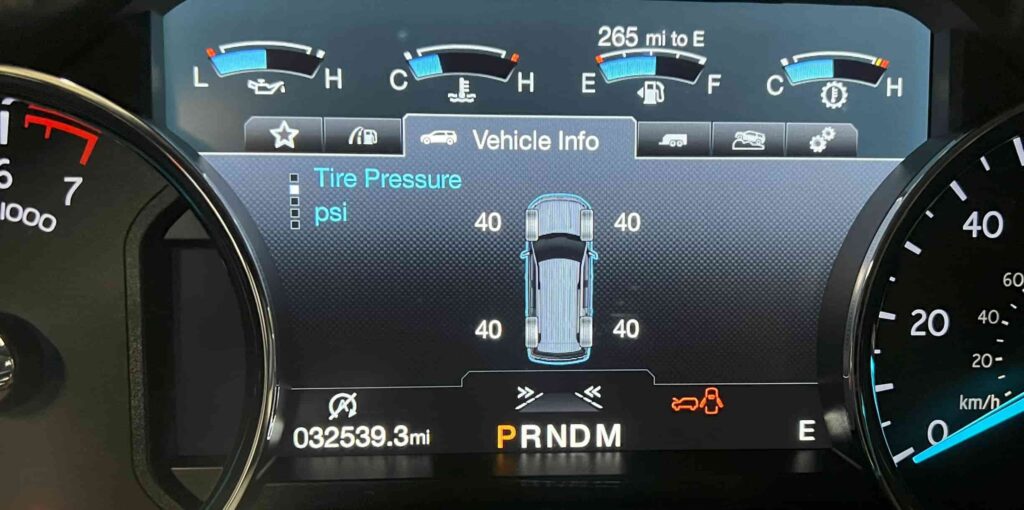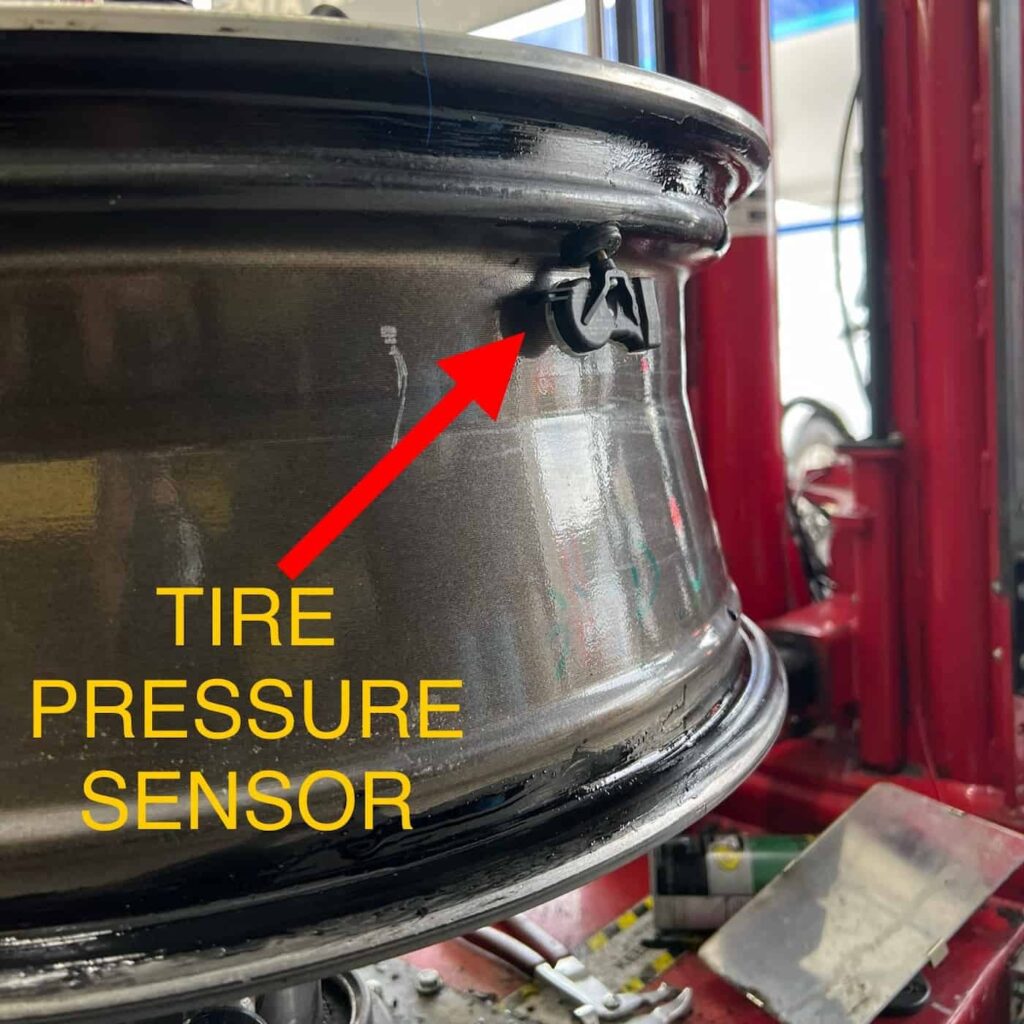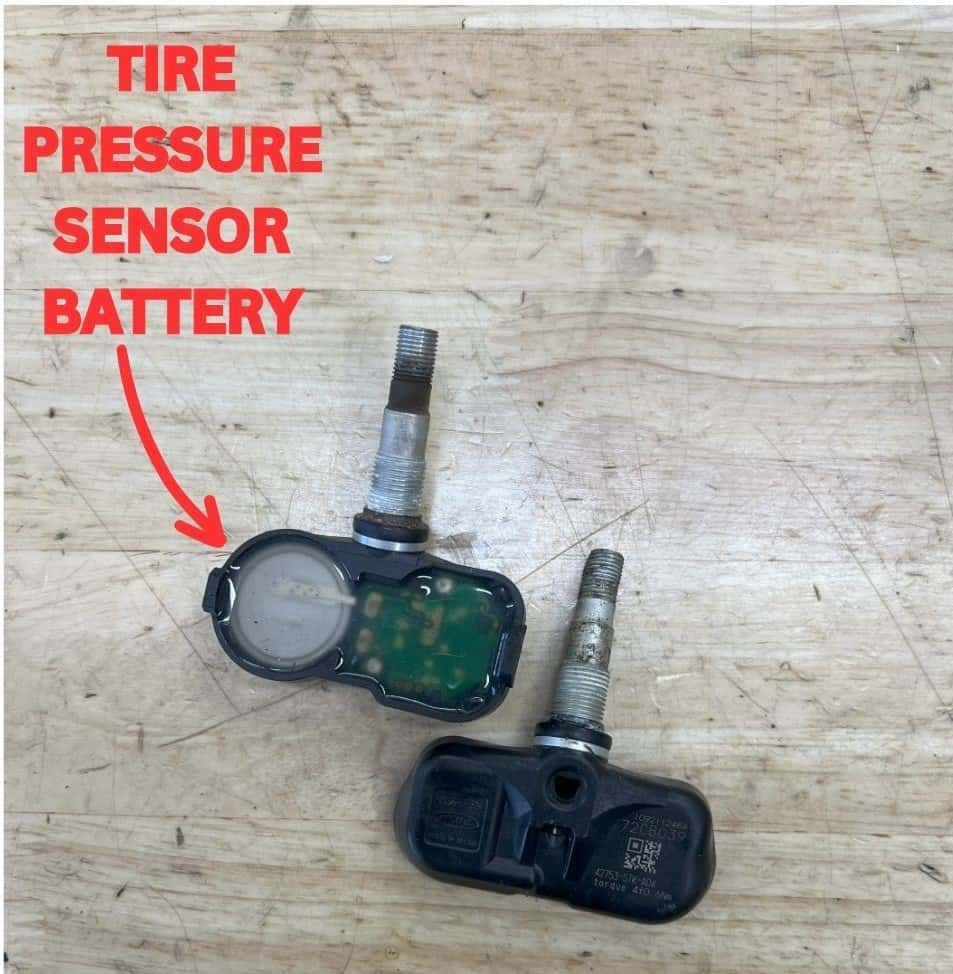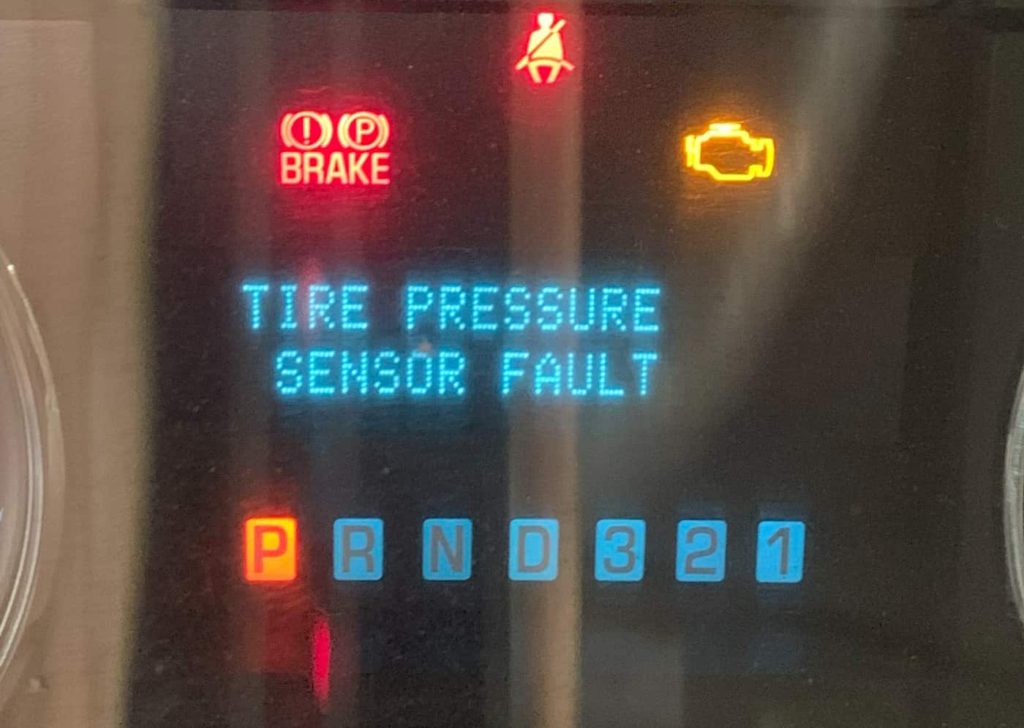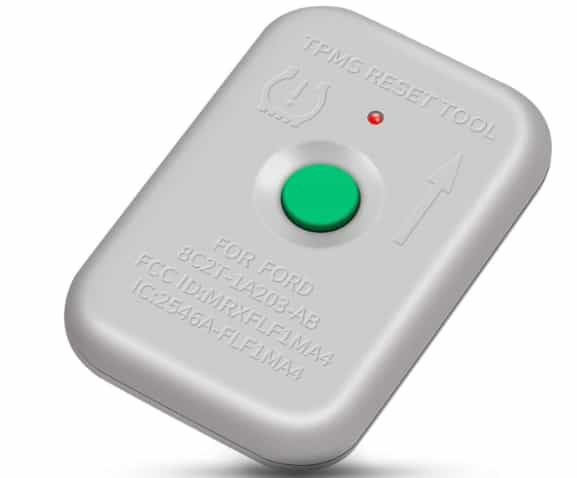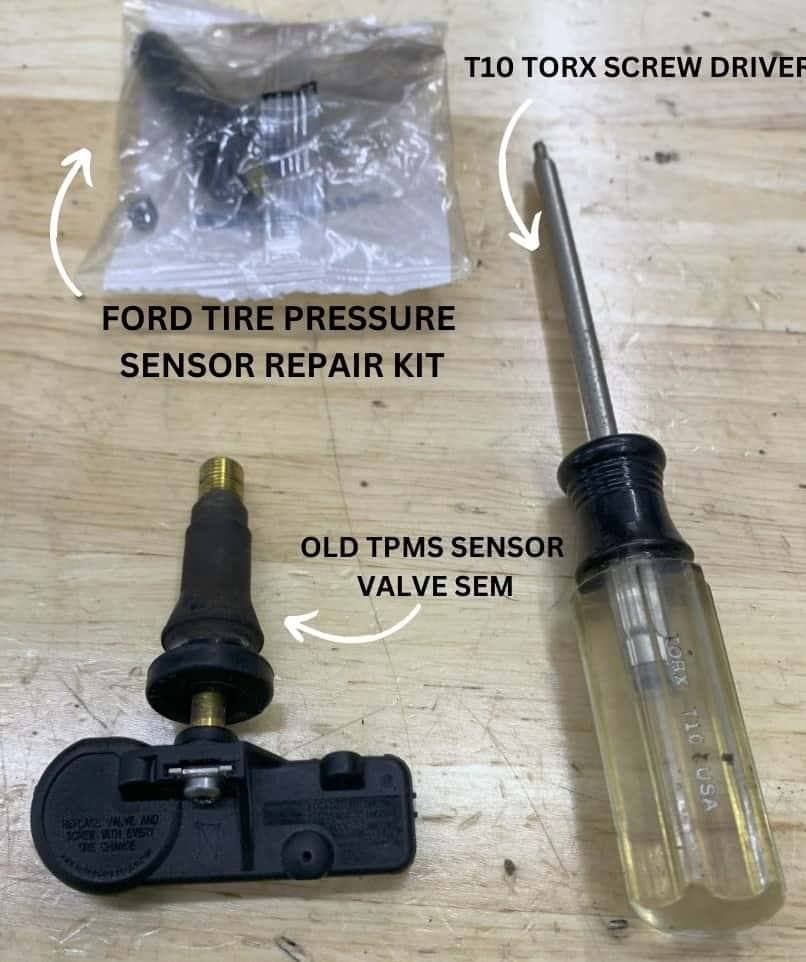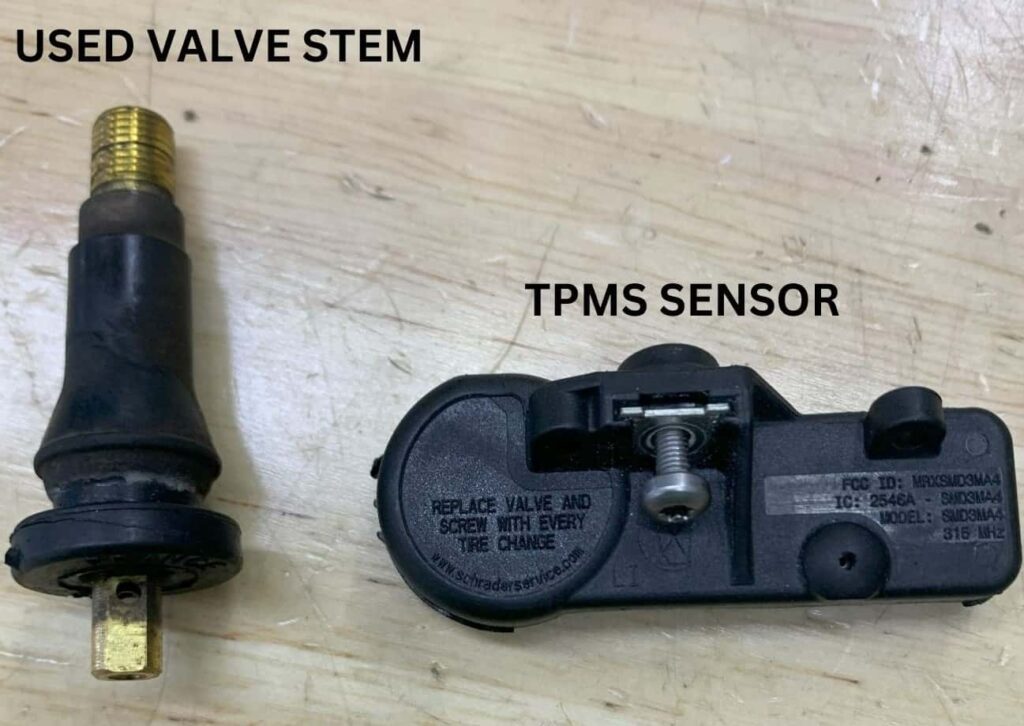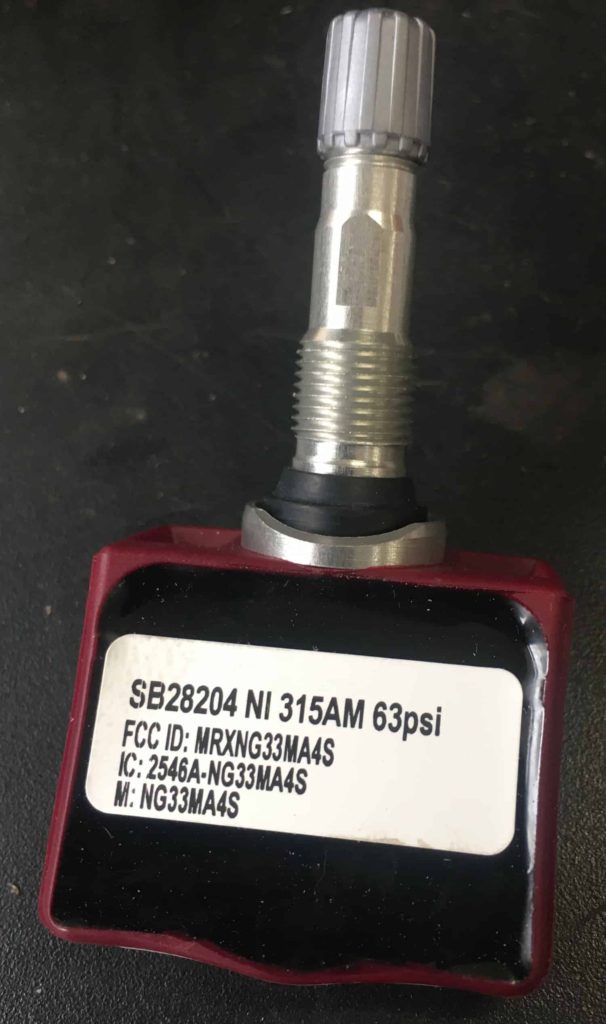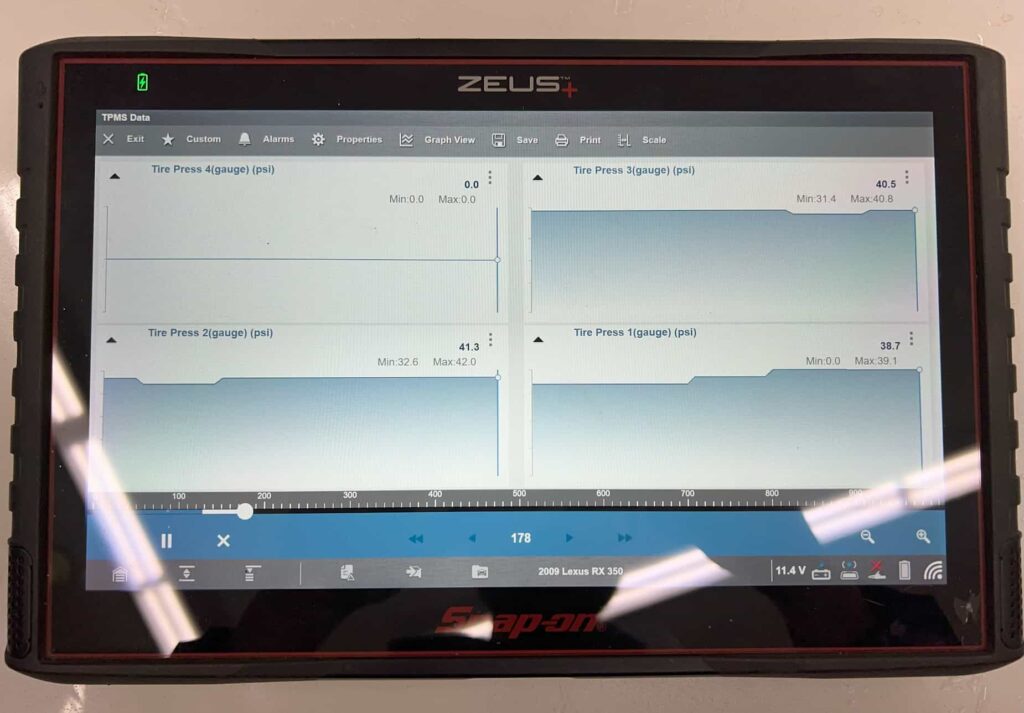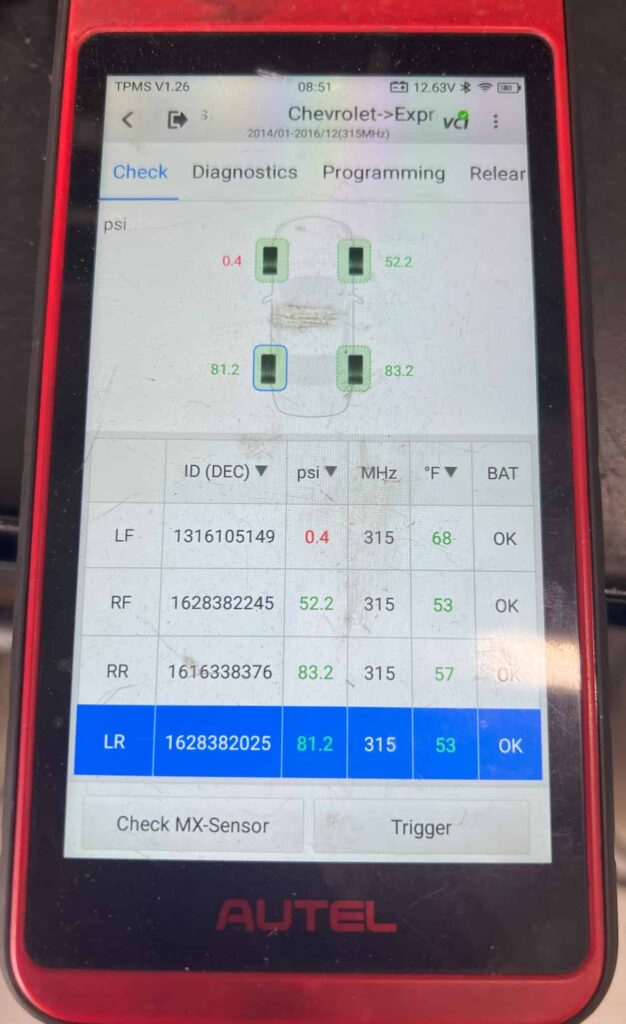What to Do When you See the Ford TPMS Tire Pressure Alert
When you see the tire pressure warning light on your Ford vehicle, first ensure that it is indeed a tire pressure issue by checking the pressure in all tires with a reliable gauge.
Adjust the air pressure if any tire is below the recommended PSI. After adjustments, drive the vehicle for at least 10 minutes at a speed above 20 mph to allow the TPMS to reset. If the light persists, inspect the tires for leaks or damage and consider visiting a Ford dealer or a professional tire shop for further diagnostics.
How do You Reset the Tire Pressure Sensor on a Ford?
Check and adjust the tire pressure to the recommended pressure when the tires are cold. (Open the driver side door and find the yellow and white sticker on the door jamb for the correct front and rear tire pressures)
Drive your Ford vehicle for a few miles over 20 Mph (32km/h)
The low tire pressure light will turn off after a few minutes of driving. (Drive for a minimum of 2 minutes)
How to Train Ford Tire Pressure Sensors
Use the Ford tire pressure sensor retrain procedure if you rotate your tires or if the tires are replaced and the wheels are reinstalled on the car in new positions.
After the wheels have been put back on the Ford, drive above 20 Mph for at least a few minutes. (2 minutes minimum)
Put the ignition in the Off position. (All power off)
Turn the key to the ON position and keep the engine off. (All electricity On)
Press the hazard lights button on and off 3 times within 10 seconds.
If you successfully put the Ford in “Reset Mode”, you will hear the horn beep one time.
The dashboard yellow tire pressure light will begin flashing and a warning will pop up explaining which tire needs training.
If this does not work, repeat the process again.
Get out of the vehicle and remove the valve cap from the front left tire. Push the valve stem core in and start releasing air from the tire.
When you hear the horn beep, stop.
A single horn beep confirms that the sensor ID number has been learned by the Ford TPMS receiver module for that wheel position.
Move onto the front right tire (passenger side front). Release air until the horn beeps.
Move onto the rear right tire. Release air until the horn beeps.
Move onto the rear left tire. Release air until the horn beeps.
After the 4 tire beeps, check and fill all 4 tires’ pressure back to the recommended cold pressure values.
The display inside the truck will now say “training complete”
Select OK
TPMS Retraining Tips
Perform this procedure at least 3 feet away from other Ford vehicles.
Do not wait more than 2 minutes between resetting each tire pressure sensor.
Always perform this process starting with the front left wheel, front right wheel, rear right wheel, rear left wheel.
If you hear a double horn beep you need to repeat the entire procedure.
Don’t forget to put the valve stem caps back on!
How Does Ford Tire Pressure Monitoring System Work?
The Ford Tire Pressure Monitoring System (TPMS) utilizes a direct TPMS framework. Here’s a detailed explanation of how Ford’s TPMS functions:
Components of Ford TPMS
TPMS Sensors: Each wheel is equipped with a TPMS sensor located in the tire’s valve stem. These sensors exist to measure the tire pressure and the temperature of each tire.
Receiver Module: The tire sensors transmit real-time data wirelessly to a central TPMS receiver module.
Onboard Computer System (ECU): The receiver module communicates the data to the Ford vehicle’s onboard computer system, which processes and evaluates the pressure readings against preset safety thresholds.
Operation of Ford TPMS
Data Collection: The operation begins with the TPMS sensors in each wheel continuously measuring the current tire pressure (and temperature, where applicable). These sensors are battery-powered and designed to last for several years.
Data Transmission: This data is then transmitted wirelessly to the TPMS receiver module. The frequency of transmission for Ford vehicles operates on 315MHz; some Ford tire systems transmit data continuously, while others only send data when the vehicle is in motion or if a significant pressure change is detected.
Data Assessment: Upon receiving data, the onboard computer (or ECU) assesses the tire pressures. It compares each tire’s pressure level to Ford’s recommended settings (the safety threshold).
Alert Activation: If any tire’s pressure drops below this safety threshold
(25% below the recommended air pressure), the system activates a warning. This is indicated by illuminating a yellow low tire pressure warning light on the dashboard, often accompanied by an alert message detailing the tire location.Reset and Calibration: The TPMS needs to be reset or recalibrated if the tires are rotated, replaced, or when the pressure sensors are serviced or changed. This ensures the system correctly identifies the location of each sensor and maintains accurate monitoring.
What Triggers a Ford Low Tire Warning Light?
Underinflation: Tire pressure below the manufacturer’s recommended psi causes the majority of TPMS alerts.
Overinflation: Excessively pumped tires can also trigger a TPMS malfunction.
Temperature Changes: Tire pressure decreases with falling air temperatures and will trigger a low tire light.
Leaky Valves: Damaged or corroded valve stems can leak air, resulting in low tire pressure.
Punctures or Tears: Any breach in the tire’s surface that allows air to escape will activate the TPMS warning.
Seasonal Changes: Transitioning from warm to cold weather can reduce air pressure over days, weeks, or months and illuminate the tire warning light.
Sensor Battery Failure: Sensors have batteries that typically last 5-10 years; a dead battery will cause a TPMS malfunction and fail to report accurate data to the dashboard.
Faulty Sensor: A malfunctioning or damaged TPMS sensor may incorrectly report low pressure or fail to function.
Recent Tire Replacement or Rotation: If the TPMS was not properly reset or trained following tire service, it might incorrectly read the pressure or location of the tire.
Electronic Issues: Problems in the vehicle’s electronics, such as the ECU or the TPMS module, may incorrectly trigger the light.
Why is My Ford Low Tire Light Flashing?
A flashing tire pressure light on the dashboard, also known as a TPMS malfunction, indicates that one or more tire pressure sensors have stopped communicating with your vehicles on board computer system. This means the vehicle’s computer cannot receive tire pressure data from that specific tire. This commonly happens when a tire pressure sensor battery is low or depleted.
What Do I Do if My Tire Light is Flashing?
The best way to deal with a flashing or blinking tire pressure light is to use a TPMS diagnostic tool to check the health of every tire pressure sensor.
Is There Anything I Can Do to Turn Off the Ford Tire Warning Light if Nothing Else Works?
If you’re having trouble resetting your Ford’s TPMS warning light, consider these simplified steps:
Disconnect the Battery: Remove the negative battery terminal to clear any temporary error codes in your Ford’s onboard computer system. Wait a few seconds before reconnecting the battery; this should turn off the TPMS light.
Release Tire Pressure: Deflate each tire by about 10 psi, then reinflate to the recommended pressure. Drive your Ford for at least 10 minutes at speeds over 20 mph.
Use a TPMS Diagnostic Tool: Use a TPMS diagnostic tool to check and diagnose the health of each tire pressure sensor.
Inspect for Leaks: After inflating, if any tire loses pressure, check for leaks. Apply soapy water to each tire to help pinpoint any leaks.
Ford TPMS Sensor Replacement
Replacing a Ford TPMS sensor involves removing the tire from the wheel, extracting the old sensor, and installing a new one. It’s crucial to use a Ford-approved TPMS sensor (or a universal sensor) to ensure compatibility with the vehicle’s monitoring system. After installation, the new sensor must be programmed to communicate with the Ford’s ECU.
Ford TPMS Tool Training
Ford TPMS tool training refers to Ford vehicles that require a special Ford TPMS tool instead of releasing air from each tire pressure sensor when training tire pressure sensors. This is typically required with Ford vehicles built between 2008-2015.
Can You Reset Ford TPMS Without a Tool?
Yes, newer Ford vehicles do not require a TPMS tool. Newer Ford vehicles require the TPMS training method explained above.
Ford TPMS Sensor: Repair or Replace?
Generally, a Ford TPMS sensor should be replaced rather than repaired when it fails or malfunctions. If your tire pressure sensor is not working properly, the entire sensor needs to be replaced. If your Ford TPMS sensor is leaking air pressure through the rubber seal, the seal can be replaced with a TPMS sensor repair kit.
Replacement is typically straightforward but requires programming to ensure the new sensor communicates properly with the vehicle’s TPMS system.
How to Install a Ford TPMS Sensor
Remove the wheel and deflate the tire.
Break the tire bead and push the tire sidewall down to access the sensor.
Remove the faulty sensor and replace it with a new one, ensuring it is compatible with your Ford model.
Re-inflate the tire and remount the wheel to the vehicle.
Can I Install a TPMS Sensors Myself, or Do I Need Professional Assistance?
Installing TPMS sensors yourself is possible if you have the right tools and technical skill. However, incorrect installation can lead to sensor failure, safety issues, and most annoyingly; a low tire pressure light.
Do New Ford TPMS Sensors Need to Be Programmed?
Yes, new Ford or Lincoln TPMS sensors (or aftermarket sensors) need to be programmed to ensure they communicate correctly with the vehicle’s electronic control unit (ECU). This programming process synchronizes the sensor with the vehicle’s monitoring system to accurately report tire pressure.
Do I Need to Replace TPMS Sensors When Changing Tires?
No, new tires do not necessitate new tire pressure sensors. If you replace the wheels on your vehicle, you can either swap the tire sensors from the old wheels to the new wheels or buy 4 new tire pressure sensors to be programmed to the vehicle.
How Often Should TPMS Sensors Be Replaced?
TPMS sensors should be replaced every 5 to 10 years, depending on battery life and wear and tear. Sensor battery life diminishes over time, and they are sealed units, so once the battery dies, the entire sensor needs replacement.
What Brand of TPMS Does Ford Use?
Ford commonly uses Schrader branded tire pressure monitoring system sensors across its various models.
How Much Does it Cost to Replace a Ford Tire Pressure Sensor?
The cost to replace a Ford TPMS sensor can vary widely depending on the model and the specific type of sensor required. Typically, the price for one TPMS sensor ranges from $50 to $100, with additional labor costs of $20 to $100 per sensor at dealers or automotive shops. Always confirm the full cost breakdown, including programming and rebalancing the tire with your automotive shop.
Why is My Ford Tire Pressure Light on When My Tires are Fine?
If your Ford’s tire pressure light is on despite the tires being properly inflated, this could indicate a malfunction in the TPMS system itself, such as a TPMS sensor low on battery. We advise using a TPMS diagnostic tool to check the sensors battery.
Is It Ok to Drive With the TPMS Light On?
Driving with the TPMS light on is not recommended as it signifies an issue with your vehicle’s tire pressure monitoring system that could lead to tire failure and pose a safety risk. Determine why the low tire light is on before driving long distances or taking any trips.
What Happens When a Tire Sensor Goes Bad?
When a TPMS sensor goes bad, it fails to report the accurate air pressure of the tire to the vehicle’s ECU. This failure can result in the tire pressure warning light staying on and may lead to incorrect tire pressure readings on the dash.
Does Ford Spare Tires Have a Tire Pressure Sensor?
Ford vehicles that have full size spare tires (e.g. Ford Bronco) use tire pressure sensors. If your Ford has a donut or non-full sized spare tire, it does not have a tire pressure sensor inside. Spare tires with tire pressure sensors must be inflated to the correct level to prevent the low tire pressure light from triggering. If you drive your Ford vehicle with a spare tire mounted on the vehicle that does not have a TPMS sensor, your low tire pressure light will turn on.
How Can You Tell Which Tire Sensor is Bad?
To identify a faulty TPMS sensor, use a TPMS diagnostic tool that can read the data transmitted by each sensor. If a sensor fails to transmit data or shows inconsistent pressure compared to manual checks, it likely needs replacement.
Can You Disable Ford Tire Pressure Monitoring System?
Disabling the Ford TPMS is generally not advisable and, in many regions, illegal as it serves a critical safety function by alerting the driver to poor tire conditions that could significantly impair driving safety. Tampering with or disabling TPMS could also potentially void vehicle warranties and may be liable for legal issues in the event of an accident.
Removing your tire pressure sensors from each wheel will only result in a TPMS malfunction and a constant low tire pressure light on the dashboard.
For Ford Owners who want to follow a specific TPMS Reset guide for there vehicle check out these article: Ford Mustang Mach-E, Ford Mustang, Ford Ranger, Ford Fiesta, Ford Focus, Ford Transit, Ford Expedition, Ford F-150, Ford Bronco
About the Author
Stefan A. – Professional Automotive Technician – I am currently an ASE certified automotive technician in New Jersey and have worked in private shops as well as dealerships. When I am not writing articles I am wrenching on race cars and driving radio controlled cars at the track!
Please note that this blog post contains Amazon affiliate links. This means that if you make a purchase through one of these links, we at TPMSRESET.COM may earn a small commission at no extra cost to you. We only recommend products that we personally use and believe in. Thank you for supporting us.


